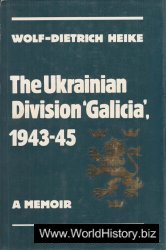B. c.e.) Fifth ruler of the Twenty-second Dynasty He reigned from 883 b. c.e. until his death. Osorkon II was the son of takelot i and Queen kapes and the grandson of OSORKON I. His reign is considered by many to be the last true flowering of the dynasty. He allowed his cousin harsiese to assume the post of high priest of Amun in thebes. Harsiese, the son of shoshenq ii, took a royal name and pharaonic titles, and Osorkon Il’s regal powers were thus reduced.
Marrying Queen karomana (4) and Queen djed-mutesankh, Osorkon II had four sons: shoshenq, nim-LOT (3) harnakhte (2), and takelot ii. When Harsiese died, Osorkon appointed his son Nimlot as the successor in the Amunite priesthood in Thebes. Harnakhte was named the ranking prelate in tanis. Shoshenq, the crown prince, did not live long enough to inherit the throne from his father.
Osorkon II embellished the temples at bubastis and celebrated his HEB-SED at Bubastis in his 22nd regnal year. Temples were exempted from taxes during his reign. Osorkon II also built at Memphis, Tanis, and Thebes, and he maintained a relative peace while watching the rise of Assyria. Records indicate that Osorkon ii made a tribute to the Assyrian ruler Shalmanesser II (859-824 b. c.e.) to avoid battles and possible invasion.
When Osorkon II died, he was placed in a gigantic sarcophagus with a Ramessid Period lid in Tanis. The burial chamber was lined with granite. Prince Harnakhte was buried beside his father. There are some records that state that Harnakhte was too large for his sarcophagus, and as a result his mummy suffered the loss of its legs and feet. shoshenq v was also buried with Osorkon II. Takelot II, Osorkon Il’s youngest son, succeeded him after a period of coregency.
Osorkon III (d. 749 b. c.e.) Ruler of the Twenty-third Dynasty
He reigned from 777 b. c.e. until his death. The son of TAKELOT II and Queen karomana (5), he was made the high priest of Amun at thebes while still a prince. His relative, harsiese, started a revolt that continued on and off for 12 years and forced Osorkon to take military action and to face banishment for a number of years. in one campaign, he burned the bodies of the rebels, an act that was condemned as sacrilege by the Egyptians. The BUBASTITE PORTAL in KARNAK describes some of his travails.
Shoshenq III usurped or inherited the throne and banished Osorkon from Thebes. In time, however, he was recalled and shared the prelature with iuput for two years. Osorkon Ill’s younger brother, Bakenptah, served as high priest in herakleopolis. In 777 b. c.e., Osorkon III was crowned in Thebes and recognized by the Libyan Chiefs of Ma at mendes. He was on the throne during the last 13 years of Shoshenq Ill’s reign in Tanis. He married Queen karaotjet, the mother of shepenwepet i, takelot iii, and rudamon. Shepenwepet I was made the god’s WIFE OF amun, or the Divine Adoratrice at Thebes. Takelot was put in charge of Herakleopolis and served as the high priest in Thebes. Takelot was then named coregent and held this rank for six years before Osorkon Ill’s death. Osorkon III was probably buried near medinet
HABU.
Osorkon IV (Akheperre setepenamun) (fl. 713-712 B. C.E.) Ruler of the Twenty-second Dynasty He reigned only from 713 to 712 B. C.E. as the ruler of TANIS and BUBASTIS and the successor of shoshenq iv His mother was Queen karomana (6). During his reign, the Nubian piankhi (1) (r. 750-712 b. c.e.) began his assault on Egypt. Osorkon IV joined a coalition of rulers and marched south under the leadership of tefnakhte of SAIS. At HERAKLEOPOLIS the two armies clashed, and Piankhi proved victorious. Osorkon IV was then made governor of Tanis by the Nubian (modern Sudanese) ruler. This arrangement did not survive the later invasions by the Nubian successors of Piankhi.
Ostraka Fragments or slabs of stone or pottery used for writing or sketching by the ancient Egyptians, they were employed much like modern paper for memos and letters. Ostraka were often provided to students for practicing writing by copying literary texts. They are much more numerous in archaeological sites than papyri. The ostraka discovered by modern excavations of Egyptian sites bear copies of truly ancient texts, artistic renderings, examples of the use of the canon of art, and other information about local and national events.
Overthrowing Apophis This is an unusual document dating to the Ramessid Period (1307-1070 b. c.e.) but part of the religious mythology from ancient times in Egypt. Apophis was a serpent that assaulted the god re on his journey through the tuat, or Underworld, each night according to Heliopolitan religious traditions. In some eras Apophis was deemed a manifestation of the god SET and was halted in his evil each night by the prayers of the faithful. The ritual of overthrowing the serpent enemy of Re included recitation of a list of the Apophis “secret” names, which when recited made him vulnerable. A selection of hymns to be sung on the occasion for his destruction were popular devotions, and many Egyptians made nightly vigils for this cause.
According to the ritual, the serpent had been previously annihilated, hacked to pieces, dismembered, and flung into the abyss by the prayers of the truly pious. This treatment of Apophis, however, did not deter him from making another attack upon Re the following night, when he arose, fully reanimated. The Egyptians assembled in the temples to make images out of the serpent in wax. They spat upon the images, burned them, and mutilated them. Cloudy days or storms were signs that Apophis was gaining ground, and solar eclipses were interpreted as a sign of Re’s demise. The sun god emerged victorious each time, however, and the people continued their prayers and anthems.
Oxyrrhynchus (1) This is the modern city of el-Bahnasa, once called Harday The capital of the nineteenth nome of Upper Egypt and located on the west bank of the bahr yusef in the Faiyum, the site contained the mummified remains of dogs. OSIRIS was favored in this region, where more Greek papyri have been found than in any other site in Egypt. The elephant-snout fish, Mormyrus kannume, was revered there. The site was originally named Per-Mudjet.
Oxyrrhynchus (2) This is the Nile fish believed to have eaten the phallus of the Egyptian god OSIRIS when SET dismembered him and cast his body parts into the river. Out of devotion to Osiris, some nomes declared that the fish was considered forbidden food. In some territories the fish was considered a delicacy because of the Osirian tradition.




 World History
World History


![Road to Huertgen Forest In Hell [Illustrated Edition]](/uploads/posts/2015-05/1432477693_1428700369_00344902_medium.jpeg)






